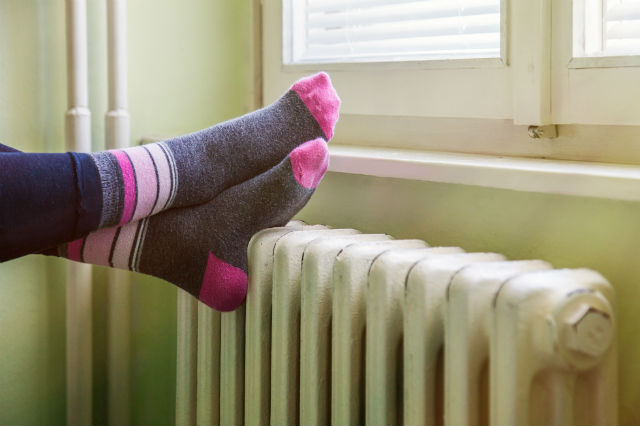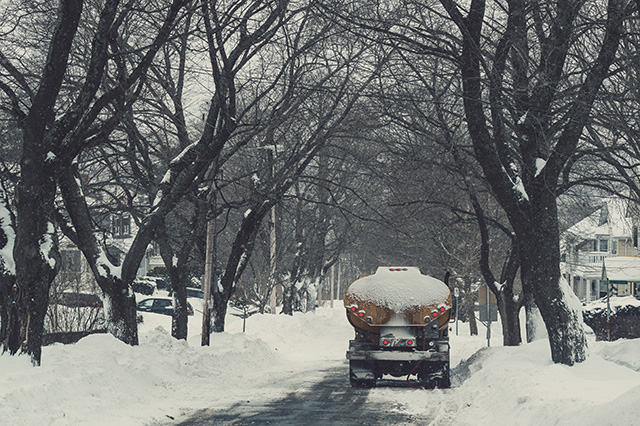Winters can get pretty cold here in the Northeast. While many of us delay turning on the heat for as long as possible, there comes a time when you have to give in. Regardless of the number of clothes you’re willing to layer, turning on the heat is the best way to get through the winter.
What you use to heat your home depends heavily on where you live. Within the U.S., the Northeast uses more oil to generate heat than any other region. “Heating oil is nearly unheard of outside the Northeast, which represents about 80% of all U.S. heating oil use,” according to Climate Central.
While oil is a popular choice among residents of the Northeast, some use propane to keep their houses warm. The number of Northeastern homes heated primarily by propane totaled just over 485,000 in 2015, according to the National Propane Gas Association. That was 10,382 houses in Rhode Island, 39,021 in Vermont, 47,460 in Connecticut, 61,515 in New Jersey, 75,169 in Massachusetts and 251,521 in New York.
Given those numbers, odds are that if you live in the Northeast, you’re likely using oil, propane or a combination of the two to partially or fully heat your home. Here’s how to prepare for deliveries.
Check Your System
One of the best ways to keep your home warm is to make sure your heating system is working the way it’s supposed to. A properly functioning heating system will heat your home efficiently and save you some money. Properly serviced boilers and furnaces burn less fuel, reducing heating costs by up to 10%, according to the U.S. Department of Energy.
If your home’s heating system is 15 years or older, it could be time for a replacement. Otherwise, a tune-up might do the trick to improve your heating system’s performance. If you think you may need to repair or replace your current heating system, check out this guide.
Pro tip: Never let your tank run empty. This can lead to sludge buildup which could clog the system.
Allow Accessibility
If you need oil or propane to keep your home at a comfortable temperature during the winter, make sure whoever is coming to deliver it can get the fuel to you. This means clearing snow and/or ice away from the tank and/or fill pipe, as well as creating a path leading to it. When clearing the way, be careful maneuvering around the tank to ensure you don’t accidentally disconnect any lines.
By making sure your heating oil or propane tank is accessible to delivery people, you’ll make the whole delivery process that much easier.
Clear Your Vents
Snow is a common culprit for blocking vents. It blankets rooftops, climbs the sides of houses in drifts and can pile up very quickly. Keeping heating system vents clear is essential in the winter. Blocked vents can harm your heating system, causing malfunctions that could require repairs and/or replacement – that would have been unnecessary otherwise – which can cost money, time and worry during an already eventful season. Even more serious, a blocked-up heating system could cause carbon monoxide to leak into a home, creating a serious safety hazard.

Take Care
Whether you are clearing snow from around your tank, unclogging vents or making a path, be careful when shoveling snow or navigating slippery surfaces. Also be mindful of potential snow and ice hanging overhead. Take into account what the temperature gauge says and dress in appropriate winter attire. Finally, let someone know you’ll be outside and don’t stay out in the severe cold longer than you have to.
Keep the Heat
Make the most of what you paid for, whether it be heating oil or propane, by keeping the heat indoors and only running your system when you need to.
Stop heat from escaping your home by caulking/re-caulking around drafty windows and insulating under doors. Then let the sunlight in to help keep the house warm during the day and close the drapes or shades at night.
According to Petro, heating systems powered by oil distribute heat in one of three ways: warm air through vents, hot water through baseboards or steam through radiators. So don’t hinder your heating system when you can help it. Be sure to move furniture away from radiators and indoor vents so the heat can move more freely.
Turn the thermostat down when you’re away from home and at night. This way you’ll be saving resources. Programmable thermostats are a great option if you often forget to lower the temperature when it’s time for bed or if you want to return to a warm house after venturing outside (and have peace of mind that the heat wasn’t running all day).
Finally, don’t be afraid to bundle up when you’re indoors. Extremities like your feet are quick to feel the cold, so wear some cozy socks and or a pair of slippers to help you stay warm. This could be enough to keep yourself from turning the heat up a degree or two, saving you money.
Petro offers 24/7 heating oil and propane gas services, including delivery, heating oil pricing plans, weather emergency services and propane gas equipment and repair services.
AAA members who sign up as a new customer with Petro Home Services can receive special offers including $200 off any new heating or AC system. Learn more.
Prepare your home for winter weather by checking out these tips on winterizing your house. And, don’t forget to make sure your homeowners insurance is ready for winter’s challenges too.
What do you use to heat your home? Tell us in the comments!
2 Thoughts on “Propane and Heating Oil Delivery Tips for Winter”
Leave A Comment
Comments are subject to moderation and may or may not be published at the editor’s discretion. Only comments that are relevant to the article and add value to the Your AAA community will be considered. Comments may be edited for clarity and length.
















I didn’t realize that heating oil was the most popular form of heating in the Northeast. My brother is making a move from the West to the Northeast. I will have to let him know that it may be a good idea to check what his new home is heated with, and possibly get on a delivery service to fill it.
If you use oil, make sure to check with your oil delivery company that they have added an antijell to the oil delivery or pick up a bottle at the automotive store.(Walmart does carry it. It’s diesel antijell. Handles 300 gallons)